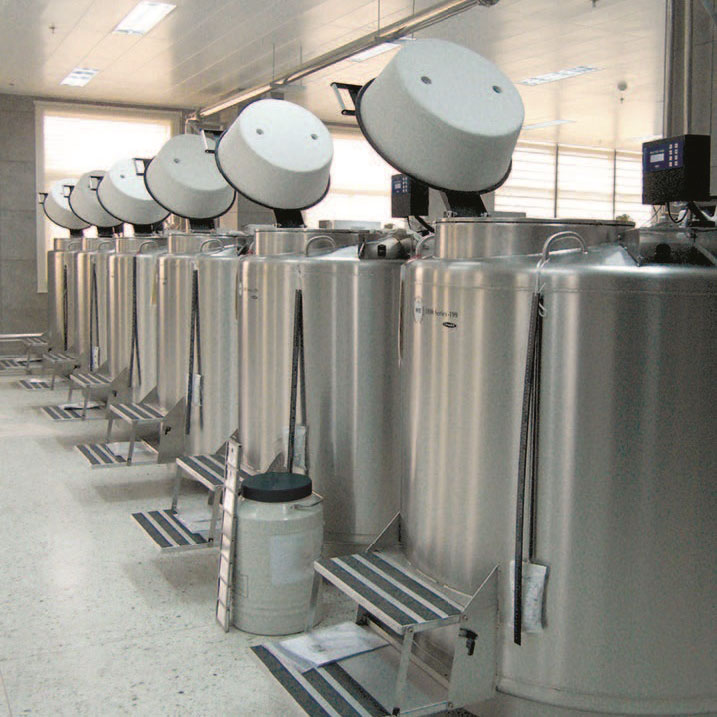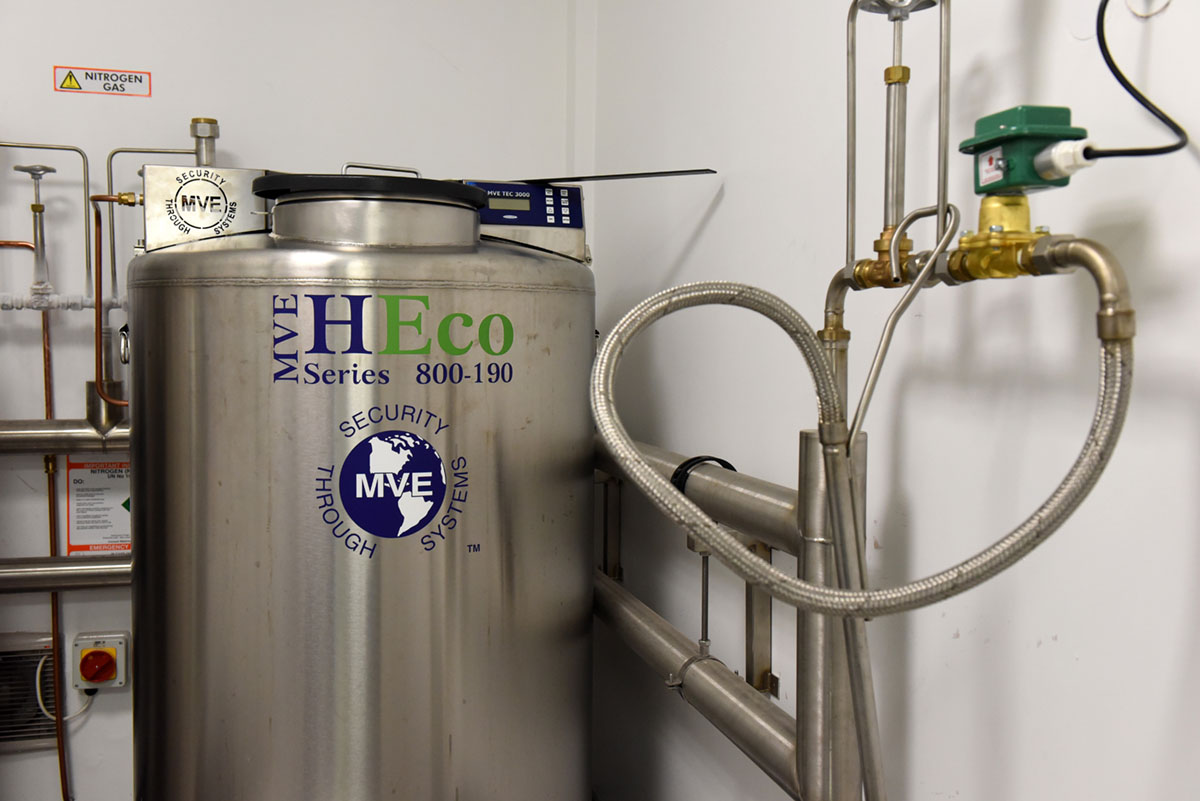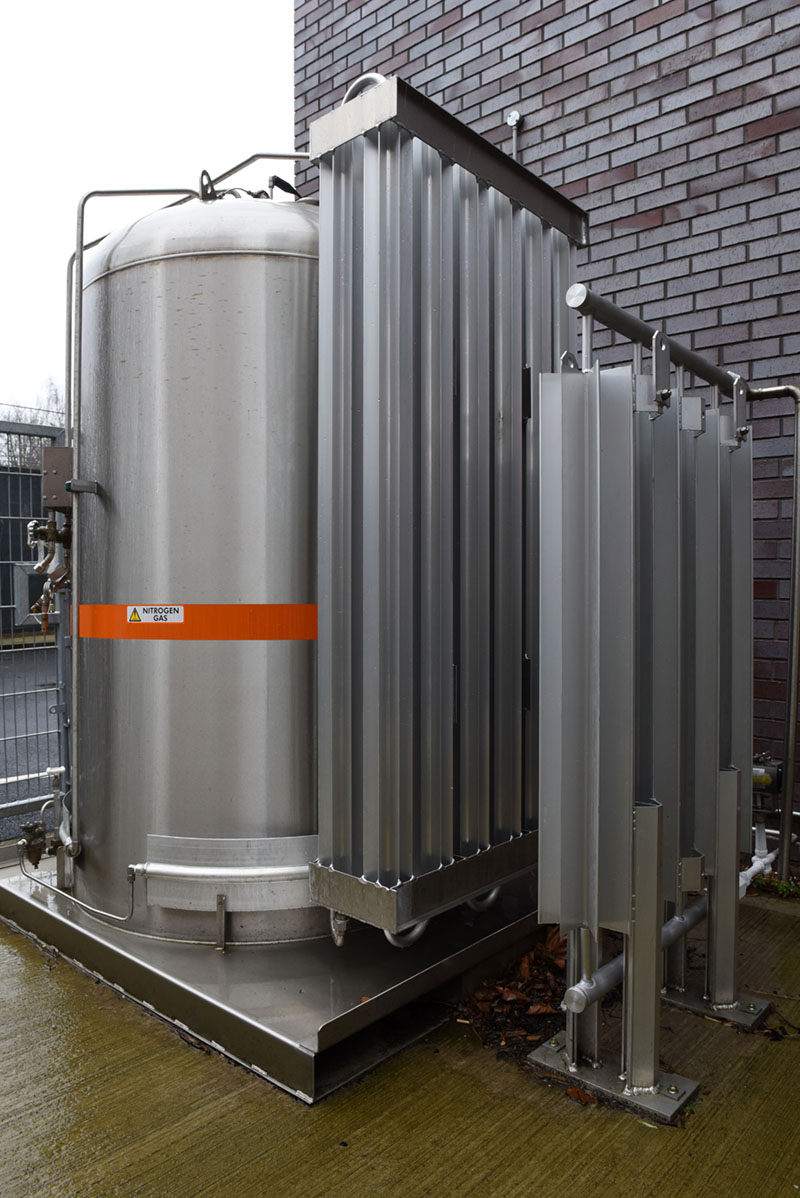Rethink your cryo-room for improved efficiency and sustainability
How the location of your cryo-room leads to better efficiency and lower costs.


About the author
Andrew Jones works at Air Products as a Business Development Manager covering the NE, Cumbria & Scotland. A degree in Statistics and background in Sales and Marketing led to him joining Air Products 26 years ago with much of that time spent in the Speciality Gases and Biomedical segments.
Location and long-term thinking. They’re two critical elements you should always consider when designing a new lab or expanding your existing set-up. Why? Because not only can they have an enormously beneficial effect on your facility’s efficiency and running costs, but if you get it wrong at the start the implications can be costly and frustrating for a long time to come.
The experts’ view
I often find customers are surprised when I tell them that, at Air Products, we do so much more than just supply liquid nitrogen and other gases for cryo-storage. Truth is, we have a whole team of experts who can help you plan, install and maintain your facility for a more efficient and sustainable operation that uses less gas – and as the UK’s only gas supplier that also offers a range of first-class freezers, we can make sure every aspect of your facility will meet your needs precisely.
As our team will tell you, with any Cryo-room project there are many factors to take into consideration. So let’s start with the most important – position, or location.
Think about location
Whether you’re an architect creating a completely new facility, a designer looking at how to create space for expansion or a manager wanting to reconfigure your existing space for better efficiency, you need to think carefully about where you place your cryo-room in the building.
Best practice tells us that the ideal location for your lab would be on the ground floor against an external wall, with space outside for a storage tank that can be easily accessed for LN2 deliveries. That would mean your freezers are as close as possible to your LN2, with a short pipeline giving consistent pressure and minimal losses during filling and no need to transport LN2 storage vessels around the building. Such a location simplifies the ventilation needed too, and it’s also worth thinking about whether you’ll have the space to expand in future.
That’s all well and good for a new-build facility, but in some cases (particularly city centre clinics), space can be restricted and even on upper floors or in basements. Such instances mean making compromises, whether it’s higher LN2 consumption, the need for forced extraction or carrying LN2 in lifts; but what we have found is that many supposedly ‘unsolvable’ issues can be solved simply by taking a different approach.
The importance of thinking ahead
In general, we would recommend looking at what you may need 5 to 10 years down the line. How big a cryo-room do you need now, and will it need to expand over the next 10 years? Will you need to buy more equipment? How many LN2 freezers will you need? Will you need additional storage and pipework? How will safety regulations and legislation change?
While it’s difficult to see into the future, having these in mind when you’re making your plans really could pay dividends later, making any expansion or operational changes easier and less costly.
Choosing the right equipment
Of equal importance as finding the right location for your cryo-room is making sure what you put in it is right for you.
First, consider what’s being stored – stem cells, eggs, embryos, sperm, blood or tissue – then the quantity you’ll need to store, and what type of storage you need, vapour or liquid. That will determine the type and size of freezer, and the inventory system you use – racking is best for vials, goblets are used for storing straws and blood bags can use boxes, cassettes or racking, with the right design allowing you to optimise the space in your freezers.
Equipment choice can have a big effect on your ongoing costs too. On a recent project, we switched a customer to MVE HEco freezers, which only needed filling twice a week rather than the previous freezers needing filling every 18 hours, resulting in a big saving in LN2 consumption and greater sample security.

Perfect pipework
Another big factor to consider is the pipework to your lab. Most installations use an SIVL (Super Insulated Vacuum Line), and keeping this as short as possible reduces installation costs as well as minimising the amount of LN2 lost between the tank and freezer.

Your choice of liquid storage vessel will be determined by how much LN2 you need and your SIVL design. As a general rule, the capacity should be at least two weeks’ consumption plus 30-50% (based on a delivery once every two weeks) – but the more you can store the better, as it means there’s less chance of you running out of LN2 and you’ll reduce your delivery costs considerably. Fixed vessels should ideally be positioned outside to reduce costs and health and safety risks, with suitable clearance around it in a locked compound, and sufficient access for delivery vehicles. If that’s not possible, wheeled LN2 storage vessels can be used, but they carry a greater health and safety risk and greater restrictions on their use (as well as being very heavy – a 230 litre cylinder weighs over 300kg when full!).
The BCGA Regulations
As you’d expect, there are various regulations you’ll need to meet, especially with new premises. These are largely administered by the British Compressed Gases Association (BCGA), and the primary document is the Biomedical Cryogenic Storage Systems Design and Operation 2021 (CP45), which covers the design, installation and operation of systems used for the storage of items at cryogenic temperature.
You can find out more about the regulations in detail here.
Other considerations to think about
A number of other factors must be taken into account when designing a cryo-room. You’ll need to use the right materials for flooring and doors, and as well as oxygen monitoring you’ll need to look at a suitable extraction system to prevent alarms going off during normal filling. And finally, your lab should be secured using a card or code system.
Think you might need expert help?
As you’ll have gathered by now, designing a new-build cryo-room or rejigging your existing space to make it more efficient is a very complex process, with a wide range of issues to consider. It can be very time-consuming and involved, co-ordinating different suppliers and making sure everything is managed correctly – which is why many choose to sub-contract their cryo-room project to a single provider with experience and expert knowledge of liquid nitrogen and its safe supply.
Indeed, the team at Air Products has successfully carried out many installations in a wide variety of premises, and worked with customers at every stage, from acting as a consultant in the design process to installing the LN2 supply to managing the entire project from start to finish.
So whatever your situation, whatever you need to achieve with your cryo-room, we can help manage your project to save time, money and effort. And stop you making the wrong choices now that mean you’ll be unable to expand your lab in the future.
To find out more, simply talk to any of the Air Products team

